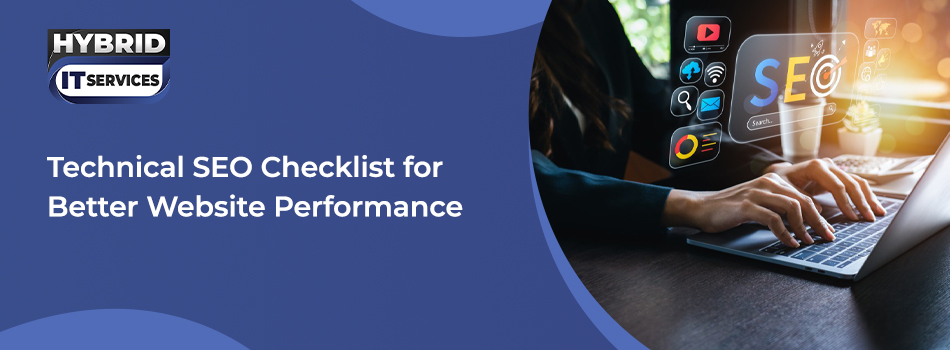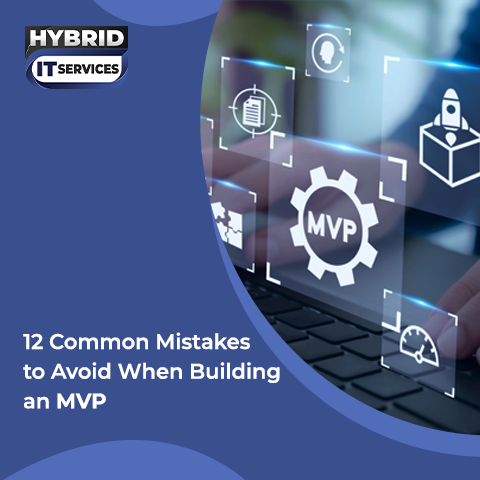Technical SEO is akin to the foundation of a house; you don't see it when you look at it superficially, but without it, everything else wouldn't work. Most business owners concentrate on content and design but forget about the technical aspect of SEO that has a direct bearing on how search engines find, interpret, and place your website.
At Hybrid IT Services, we think that optimizing the performance of your site begins with sound technical SEO audit tactics. This blog will walk you through the most critical aspects of Technical SEO Checklist Technical you must inspect in order to enhance your site's performance and visibility.
Understanding What Technical SEO checklist Is
Technical SEO is the practice of optimizing your website's infrastructure so that search engines are able to easily crawl, understand, and index your content. It does not include writing blog posts or building backlinks but instead is about the foundation of your website's page speed, mobile friendliness, site security, etc. If your site structure is not technically sound, even your best content may not rank highly on search engines. Read the detailed blog: Complete Guide to SEO in 2025: Strategies, Tools & Best Practices
Start with Mobile Optimization
Since the majority of traffic is from mobile devices today, Google indexes web pages on the basis of mobile pages first now. That means your site must be mobile optimised to rank high on search. You need to opt for a responsive site that may fit the screen size automatically.
It shouldn’t matter if the user is accessing the site from their phone, tablet or window. They gain the same experience from all devices with responsive design. To achieve this kind of user experience, avoid noisy design, unnecessary copy, and the use of unwanted pop-ups that disturb user engagement.
Make Your Website Secure with HTTPS
Surfers of the internet today care more about privacy than ever, and so do search engines.
In case your website is HTTP you need to shift it as HTTPs. This encrypts the information flow of your site between user and site. In addition, it also provides a kind of security from cybersecurity attacks. An SSL certificate secures your website and helps to create trust, alerting users that it is safe to use.
Optimize Web Vitals for Better UX
Core Web Vitals are how Google quantifies what users perceive about your website. They are loading interactivity and visual stability. LCP, specifically, measures how quickly the primary content is loading, INP measures responsiveness, and CLS measures how stable objects are while loading the page. Improving these metrics means your visitors see less jarring, quicker performance, which can eventually result in improved rankings and better engagement.
Speed Up Your Page Load Speed
Slow website loading speeds can be annoying to customers and expensive for your company. Studies indicate that users will leave sites with over a few seconds of slowdown in loading time. That means even minor slowdowns have the impact of missed customers and decreased rankings.
Page speed optimization involves compressing images, reducing code, hosting on quicker services, and reducing redirects. Diagnostic tools like Google PageSpeed Insights can help determine what is slowing down your website and deliver actionable suggestions to improve load time.
Use a Clean and Current XML Sitemap
An XML sitemap is a file with all of your high-value pages on your site that makes it simple for search engines to find and index your content. Without a properly organized sitemap, even your highest-quality pages might go unnoticed by search bots.
Your sitemap must include high-priority pages, be refreshed occasionally, and be submitted to search engines such as Google Search Console. Remove old or redundant URLs from your sitemap so that it is more crawlable and will encourage the search engines to assign greater importance to the most vital content.
Fix Duplicate Content Issues
Duplicate content refers to content that is identical or nearly identical and located on several pages on the same website or another website. Search engines are confused by this, and they can become perplexed over whether to rank or index one of them.
To prevent that, identify duplicate pages and 301 redirect them to the original. Or else, canonical tags can also indicate the preferred page to search engines. Eliminating duplicate content not only enhances SEO but also trust with users by providing unique and consistent content.
Use Structured Data with Schema Markup
Structured data improves click-through and even the way that your pages appear in rich result formats. Schema markup also enables you to link your business with specific industries, areas, and services, so your content becomes discoverable and appealing in search results.
Find and Fix Crawl Errors
Crawl errors happen when browsers try to crawl your website but can't access the content that they need. Crawl errors happen most often because of malformed links, misdirected redirects, or robot.txt-blocked pages. Take insights from the related blog: How to Create an Effective SEO Strategy in 2025?
Periodic crawling error checks through Google Search Console help your website stay open to crawling. Fixing the issues isn't good for only improved SEO but also helps visitors avoid ending up on dead pages or frustrating navigations.
Maximize Your Robots.txt File
Robots.txt informs search engines whether or not they should crawl specific areas of your site. Although having it block unwanted content like login pages or internal admin pages can be useful, doing it incorrectly will bury useful content unintentionally.
Check your robots.txt to make sure search engines are crawling the most valuable pages but not crawling unwanted or duplicate content. Having your robots.txt optimized properly will optimize crawl efficiency and visibility for your site.
Design a Clear Website Architecture
Organized site architecture facilitates users and search engines ability to understand your content organisation. Organized site architecture means having similar pages within categories, using descriptive URLs, and retaining similar navigation across the site.
Besides improving user experience through efficient information retrieval, it also allows search engines to crawl deeper in your site. A good internal linking strategy also complements site architecture by distributing authority across key pages.
Hybrid IT SEO services provide a high-quality user experience through responsive web designs. Consult us now for better rankings and high user engagement web design.






